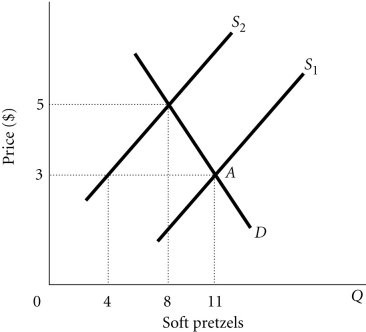When an investor buys a corporate bond
A) the face value of the bond is equal to what the investor paid for the bond.
B) the investor becomes part owner of the corporation.
C) the principal of the bond is a loan to the corporation.
D) the interest made on the bond represents the bondholder's limited liability in the company.
C
You might also like to view...
If a perfectly competitive industry is taken over by a single firm that operates as a single-price monopoly, the price will ________ and the quantity will ________
A) fall; decrease B) fall; increase C) rise; decrease D) rise; increase E) not change; decrease
In 2011, Armenia had a real GDP of approximately $4.21 billion and a population of 2.98 million. In 2012, real GDP was $4.59 billion and population was 2.97 million. Armenia's real GDP per person in 2012 was
A) $1,545. B) $380. C) $1,413. D) $132.
Given full-employment output = $2,800, equilibrium real GDP = $2,500, and MPS = 0.25, which of the following changes would most likely bring the economy to a full-employment level of real GDP?
a. $300 decrease in taxes. b. $75 increase in government spending. c. $75 decrease in taxes. d. $300 increase in government spending. e. $75 decrease in government spending.
Refer to the information provided in Figure 4.2 below to answer the question(s) that follow. Figure 4.2Refer to Figure 4.2. The market is initially in equilibrium at Point A and supply shifts from S1 to S2. Which of the following statements is true?
Figure 4.2Refer to Figure 4.2. The market is initially in equilibrium at Point A and supply shifts from S1 to S2. Which of the following statements is true?
A. There is no need for price to serve as a rationing device in this case because the new equilibrium quantity is higher than the original equilibrium quantity. B. Price will still serve as a rationing device causing quantity demanded to fall from 11 to 8 soft pretzels. C. The market cannot move to a new equilibrium until there is also a change in supply. D. Price will still serve as a rationing device causing quantity supplied to rise from 8 to 11 soft pretzels.